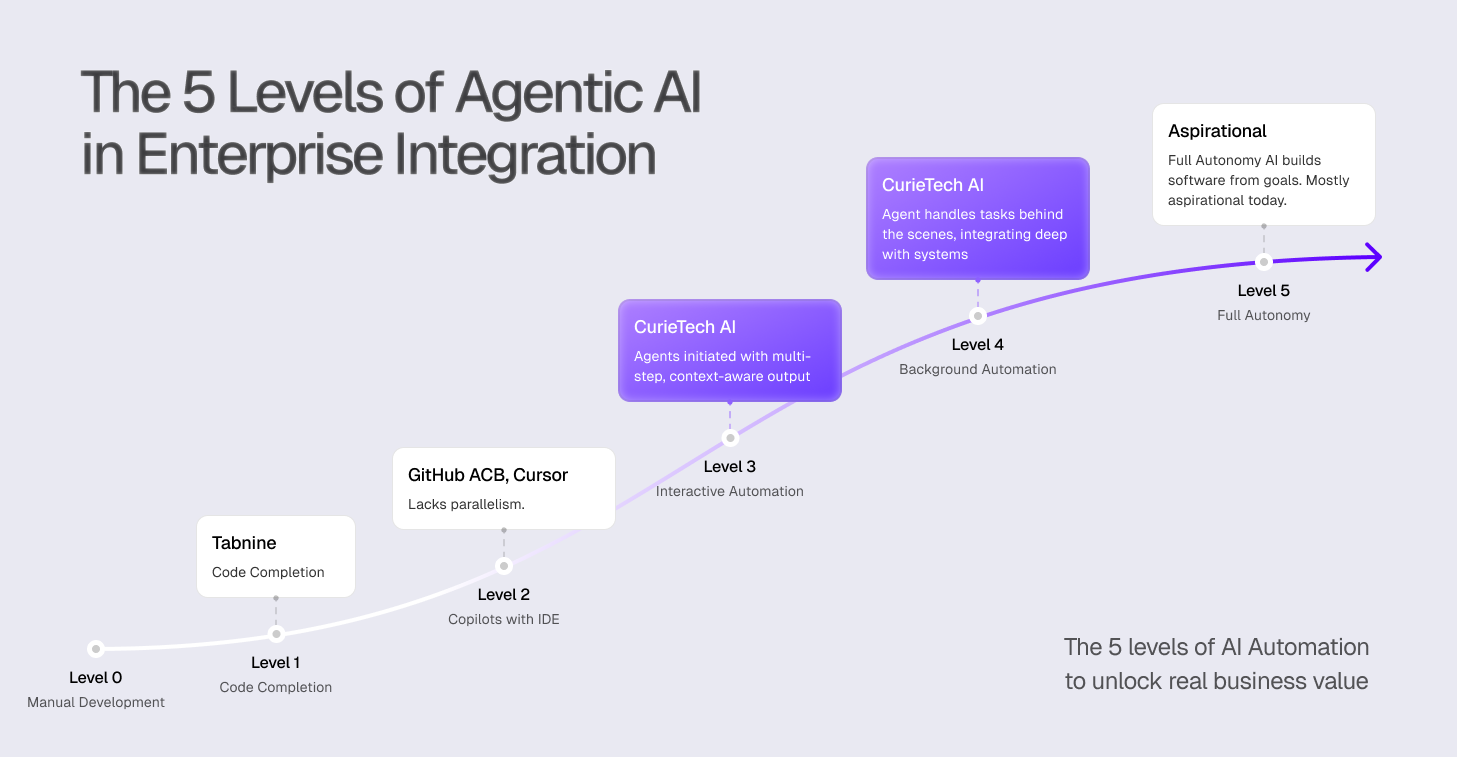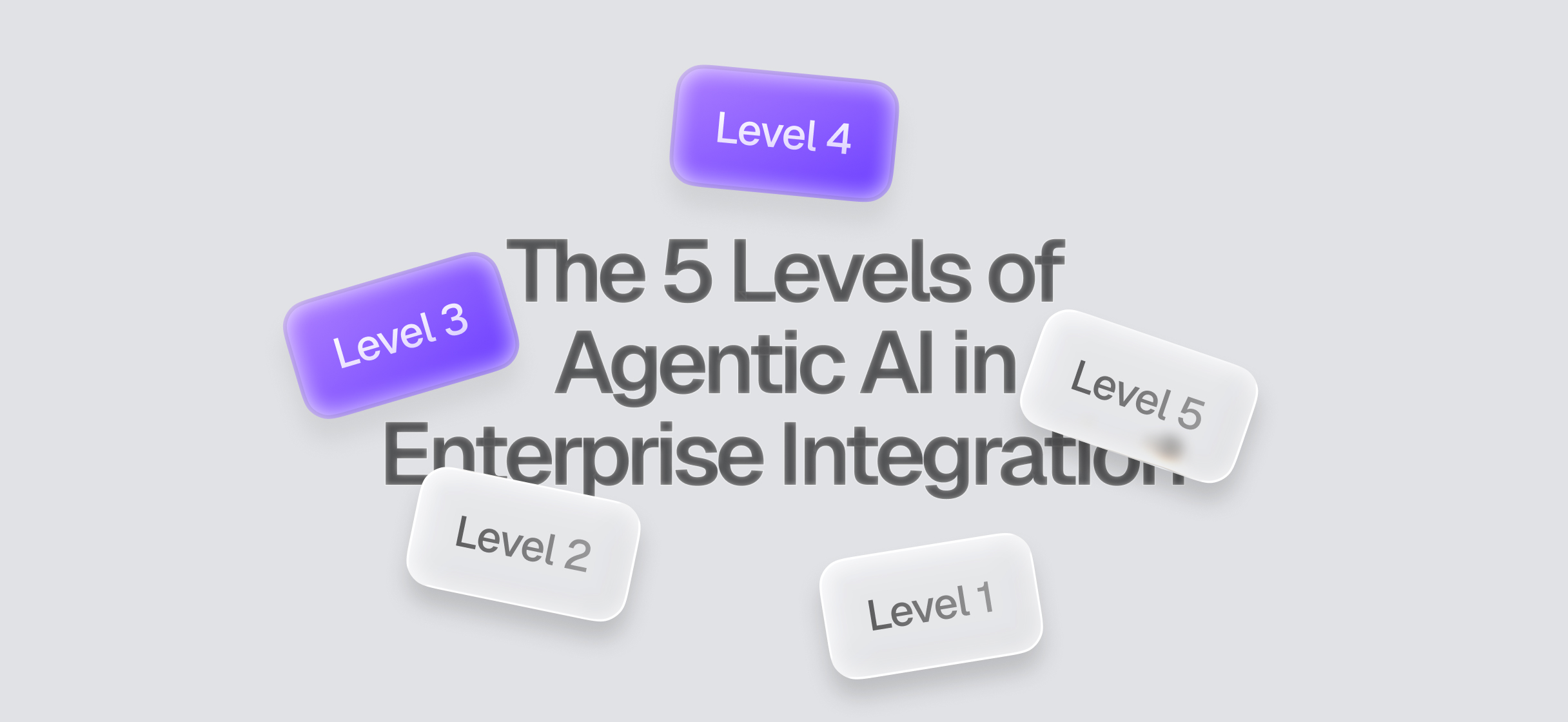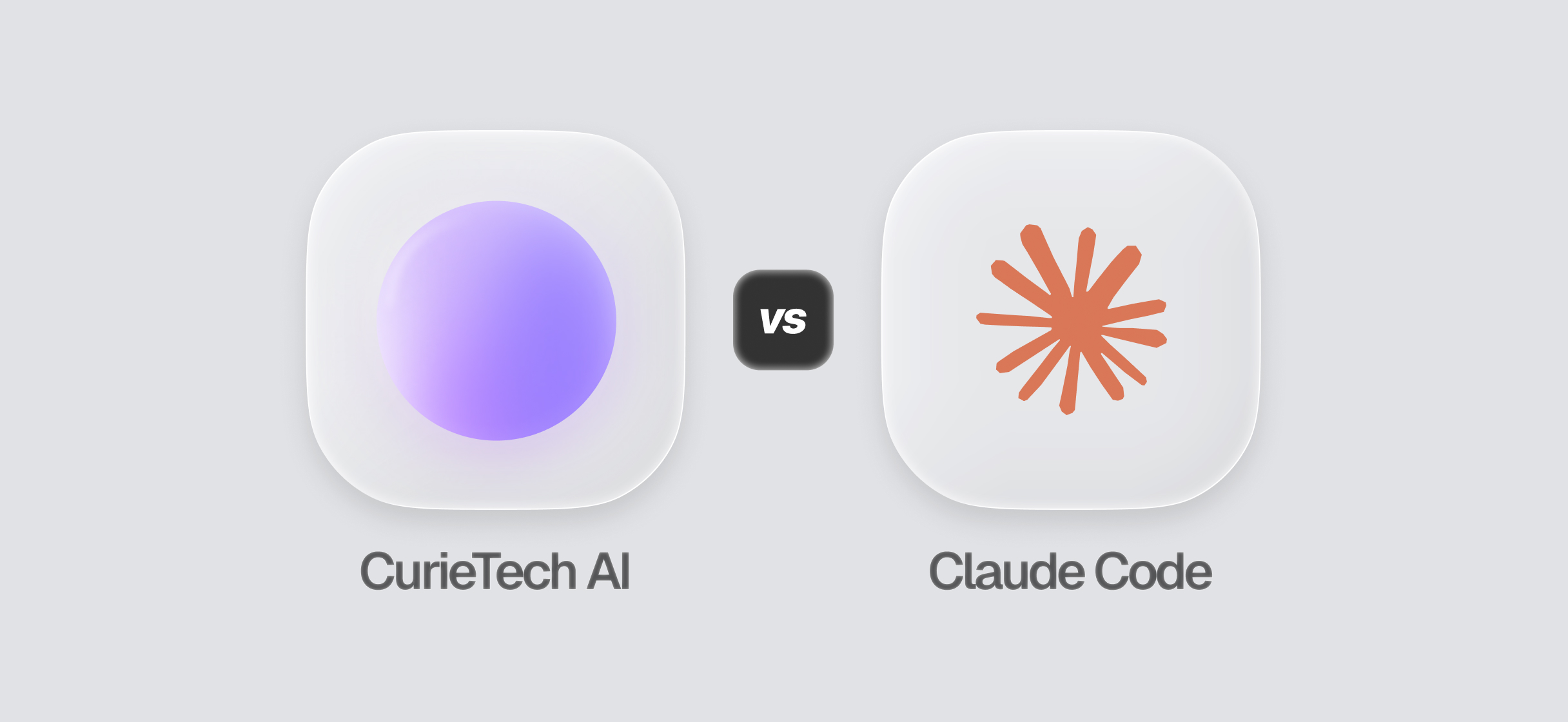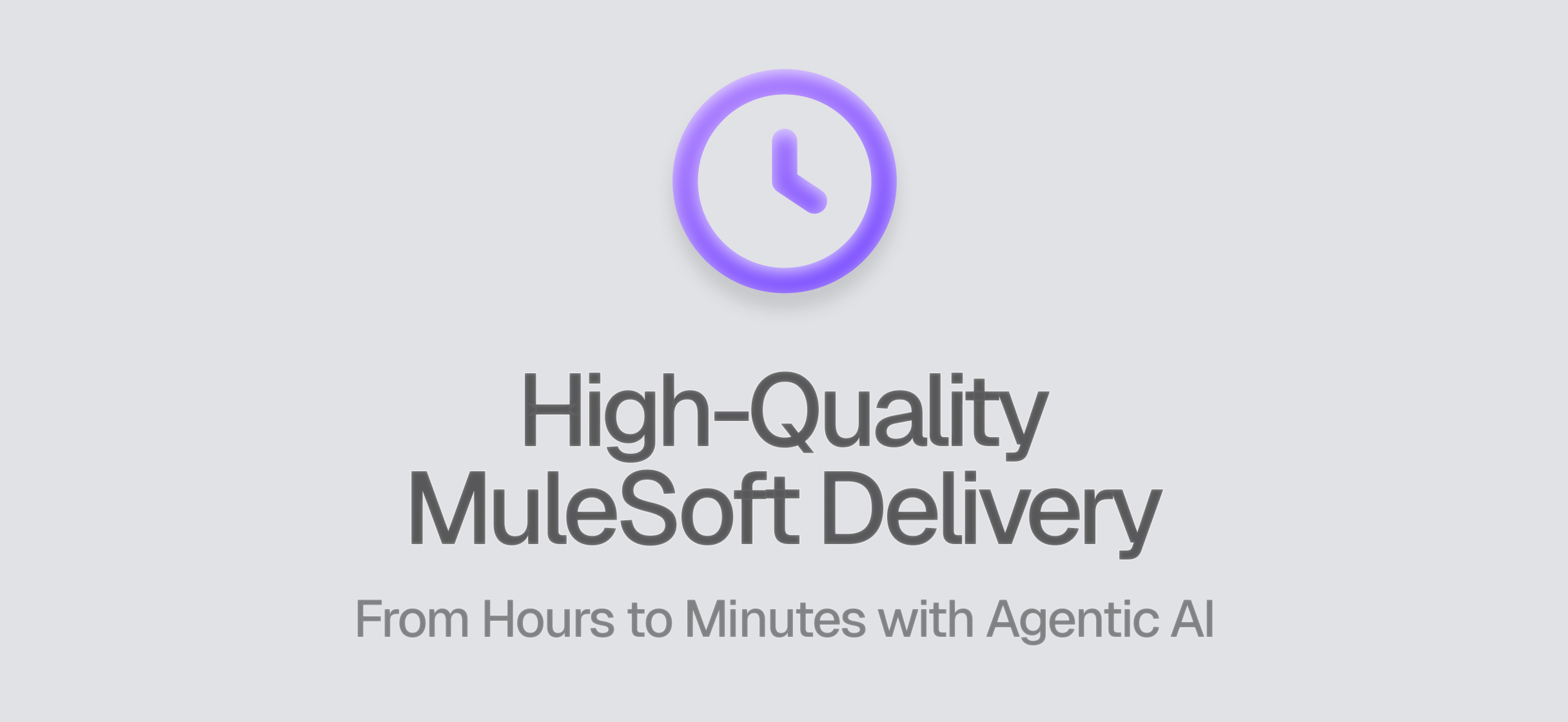The State of the CIO 2025 report from CIO.com reveals a clear shift - 68% of CIOs say that AI has already begun reshaping their operations. The numbers are even higher in high tech (77%) and financial services (75%).
AI is no longer experimental. Research from Andreessen Horowitz shows that enterprise AI budgets have moved beyond pilots and innovation funds and they’ve become recurring line items in core IT and business budgets. Most importantly, AI landscape has matured - off-the-shelf solutions are eclipsing custom builds, and IT organizations are investing in AI-native third-party applications.
In other words, AI is not an innovation project anymore. It’s an operational priority.
And IT leaders are now accountable for turning that investment into measurable business outcomes.
What Kind of AI Belongs in My Enterprise Integration Stack?
As organizations explore AI-native third-party solutions for building and maintaining enterprise integrations, IT leaders and Integration Architects face a new set of decisions.
Common questions include:
- Does this AI tool solve my actual integration challenges — or just add more complexity?
- Can it work with my existing stack, like MuleSoft, and fit seamlessly into current workflows?
- How accurate and reliable is the code it generates?
These are critical questions because many AI coding tools weren’t built for enterprise integration teams. They were designed for product engineers, not the lean, agile teams responsible for keeping business systems connected and running efficiently.
The 5 Levels of Agentic AI for Integration Coding and Delivery
Over the past few years, AI has evolved from a passive assistant to an intelligent collaborator.
To understand this progression and where your organization stands today — it helps to look at the five levels of agentic AI in enterprise integration development.

Level 0 – Manual Development (Pre-Agentic Era)
This was the world before AI. Developers wrote every line of code manually. Testing, documentation, and refactoring were handled separately, often with limited coverage and slow feedback loops.
Productivity was entirely dependent on individual skill, leading to high costs, inconsistent quality, and limited scalability. For many integration teams, this remains the starting point — heavy effort, light on automation.
Level 1 – Code Completion Tools
The first wave of AI tools, such as TabNine or IntelliSense, introduced basic automation through code suggestions. They improved syntax accuracy and reduced typing time, helping developers move a little faster.
But these tools are still reactive. They lack understanding of business logic or integration context. They make development slightly easier, but they don’t transform how work gets done.
Level 2 – AI Copilots
AI copilots marked a new stage in intelligent assistance. Tools like GitHub Copilot, Cursor, and Anypoint Code Builder Dev Agent provide code suggestions, some test scaffolding, and refactoring support.
They bridge intent and implementation but still rely on close human supervision. They’re like interns - valuable partners, but not yet independent. They improve productivity, but the developer must closely guide and monitor every step.
Level 3 – Interactive Automation with Domain Specialization
This is where the real transformation begins. At Level 3, AI evolves from a coding assistant into a domain-aware AI. These systems understand integration platforms like MuleSoft, maintain context across tasks, and handle multi-step workflows — from code generation, DataWeave and testing to documentation, refactoring and migration. Domain-specific AI agents, such as CurieTech AI, can generate production-ready code the very first time delivering high accuracy and consistency.
At this level, developers stop coding line by line and start orchestrating outcomes.
AI becomes a true co-developer, not just a helper.
Level 4 – Background Automation
At Level 4, automation moves into the background. AI systems continuously monitor, optimize, and update integration components without waiting for explicit prompts.
They proactively detect regressions, manage dependencies, and fix performance issues before they escalate. Developers shift their focus from maintenance to innovation. Solutions like CurieTech AI are already moving in this direction.
Level 5 – Full Autonomy
Level 5 represents the aspirational future — a stage where AI can design, code, test, deploy, and maintain software entirely on its own. At this level, humans define what needs to be achieved, and the AI determines how to achieve it. This is true goal-driven, autonomous development.
While it’s still emerging, advancements in agentic AI frameworks are accelerating progress toward this vision — promising faster delivery, higher consistency, and continuous optimization.
Why Level 3 Is the Sweet Spot for Integration Teams?
Enterprise integration teams are typically small, agile, and under constant pressure to deliver faster as business applications and processes evolve.
For these teams, Level 3 — Interactive Automation — is the turning point.
It’s where AI transitions from suggestion to collaboration, driving measurable improvements in speed, quality, and delivery accuracy.
By starting at Level 3, organizations lay the foundation for agentic integration — where AI becomes an active team member, not just a tool.
Advice for CIOs, IT Leaders and Integration Architects
If you’re leading agentic transformation, here’s the key takeaway:
- Start now by building your agentic AI foundation.
- Focus on domain-specific AI agents that understand your integration ecosystem and deliver high accuracy code for the first attempt.
- And redefine developer productivity — it’s not about lines of code, but about business value delivered.
The AI shift in enterprise IT is already underway. For integration teams, the true advantage starts at Level 3, where collaboration with AI transforms how work gets done.



.jpg)

